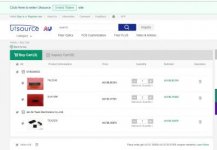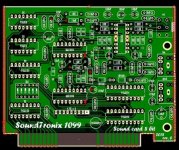ZoomPicard
New Member
- Joined
- Jan 10, 2019
- Messages
- 2
I have put together what I think are the correct components for this build:
https://www.mouser.com/ProjectManager/ProjectDetail.aspx?AccessID=1d22359016
At this point I can't confirm that these are all 100% correct, just my first stab at it. If anyone has any comments let me know
There are three parts I am ordering from UTSource. Sadly direct from UTSource they will only sell TEA2025 in packs of 10 so I am trying to buy from an alternative on that site (See Screenshot)

I will report on my progress once everything has arrived and I have put the board together
Product Cost total including the PCB which I got from Ebay here:
https://www.ebay.com.au/itm/PCB-MUS1099-ISA-8-bit-sound-card/382704656883
Is around $103 AUS ($73 USD) for myself living in Australia. I am sure US based it would around $50-70 USD
https://www.mouser.com/ProjectManager/ProjectDetail.aspx?AccessID=1d22359016
At this point I can't confirm that these are all 100% correct, just my first stab at it. If anyone has any comments let me know
There are three parts I am ordering from UTSource. Sadly direct from UTSource they will only sell TEA2025 in packs of 10 so I am trying to buy from an alternative on that site (See Screenshot)

I will report on my progress once everything has arrived and I have put the board together
Product Cost total including the PCB which I got from Ebay here:
https://www.ebay.com.au/itm/PCB-MUS1099-ISA-8-bit-sound-card/382704656883
Is around $103 AUS ($73 USD) for myself living in Australia. I am sure US based it would around $50-70 USD





